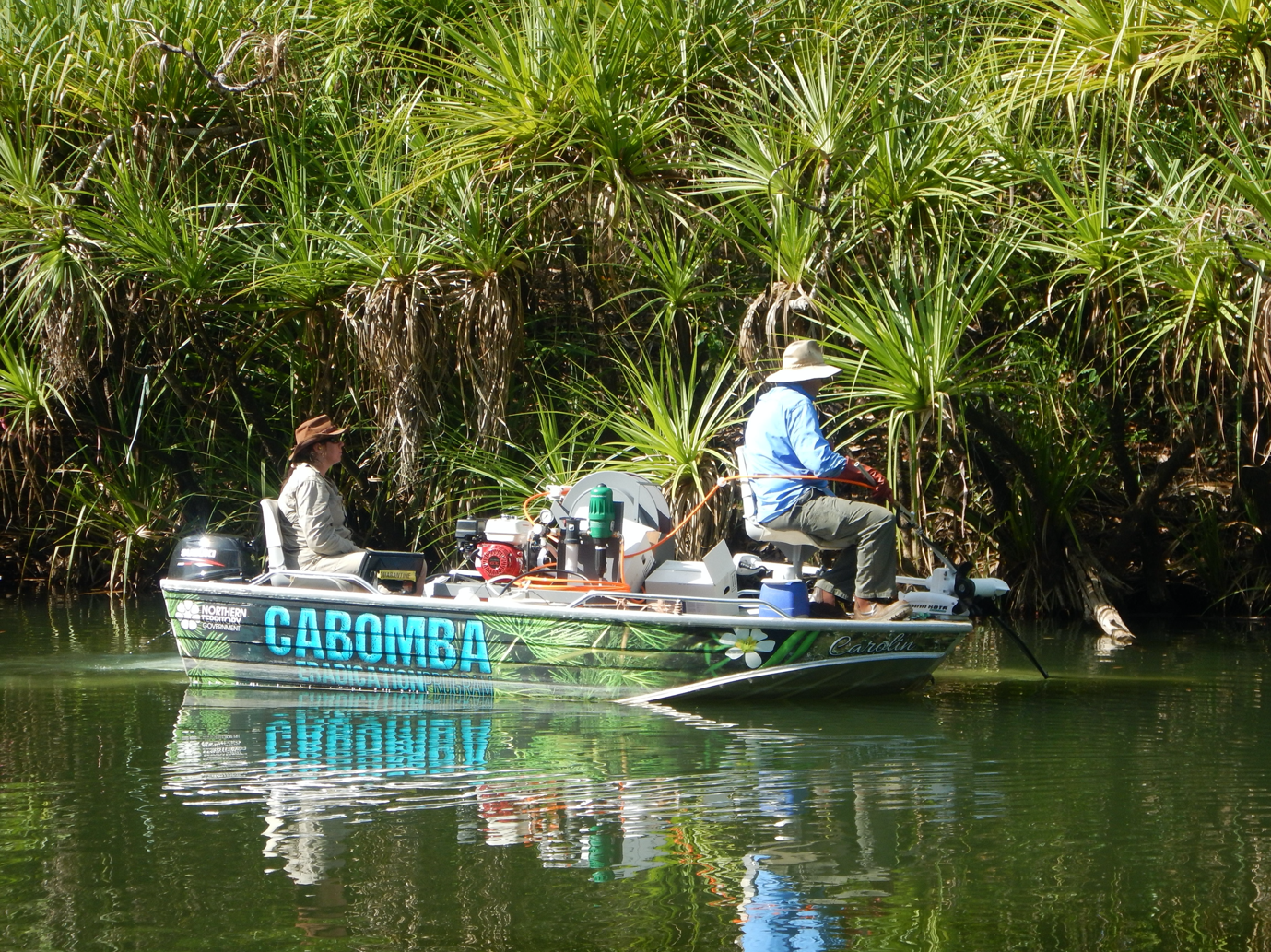14 February 2020
Aquatic field surveys in northern Australia are expensive, difficult and often dangerous, especially when saltwater crocodiles are present.

But new environmental DNA (eDNA) approaches being investigated by a team of Hub researchers led by James Cook University Professor Damien Burrows means that detecting aquatic species is as simple as collecting water in a bottle. Together with project partners at the Northern Territory and Queensland Governments, the team has developed eDNA sampling and analysis techniques for a suite of species of conservation or management importance in the streams and lakes of northern Australia, including endangered rainforest frogs, the invasive aquatic plant cabomba, two species of tilapia and cane toads.
They have developed a new method that allows water samples to be collected and preserved rather than filtered and are using a novel preservative solution that does not need refrigeration, even under the high temperatures of the tropics. Samples treated with the preservative are able to be stored longer before analysis. These new field protocols will allow water to be successfully collected in remote areas by people who have limited scientific training.
The project team have also just received samples collected by the Anindilyakwa Land and Sea Rangers on NT’s Groote Eylandt which will be screened for the presence of largetooth sawfish. See the latest project update for more information.
Want to know more about the Resilient Landscapes Hub's activities and our research into practical solutions to environmental problems? Stay informed about activities, research, publications, events and more through the Hub newsletter.